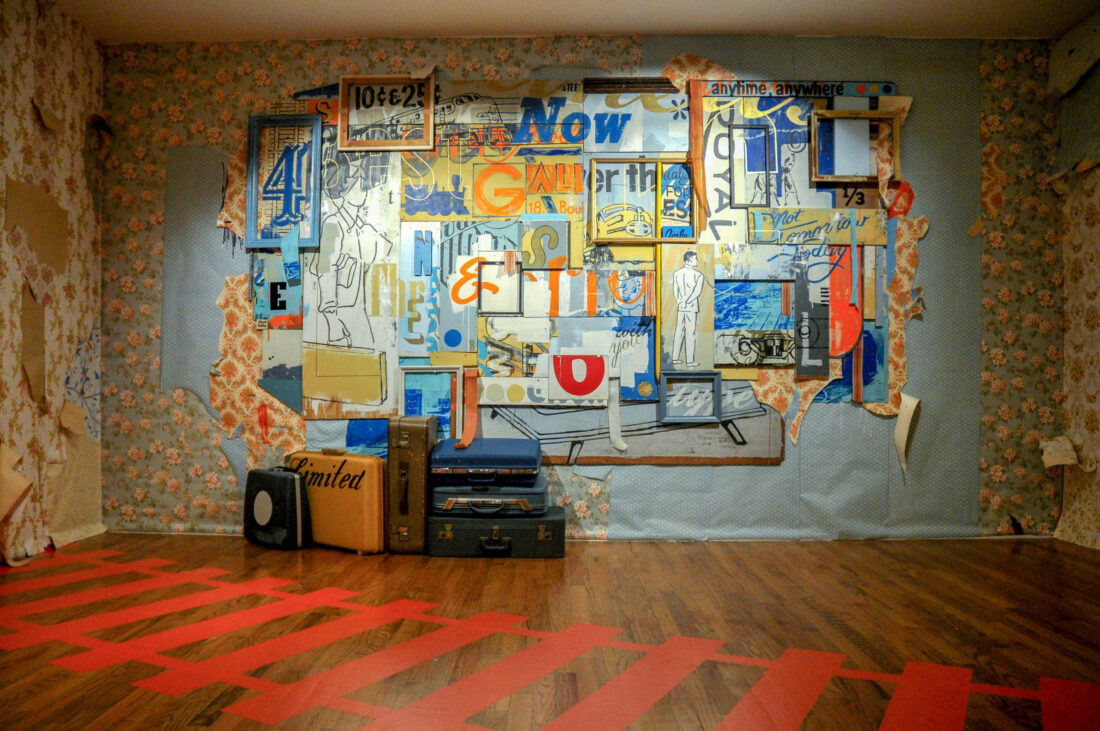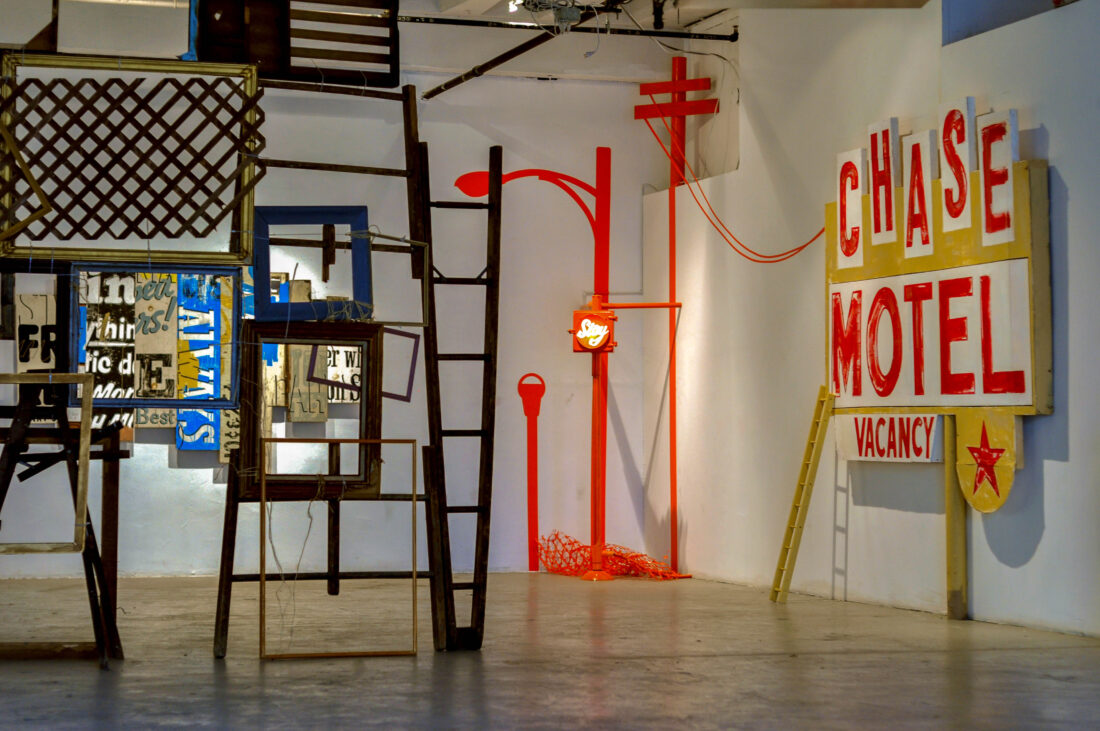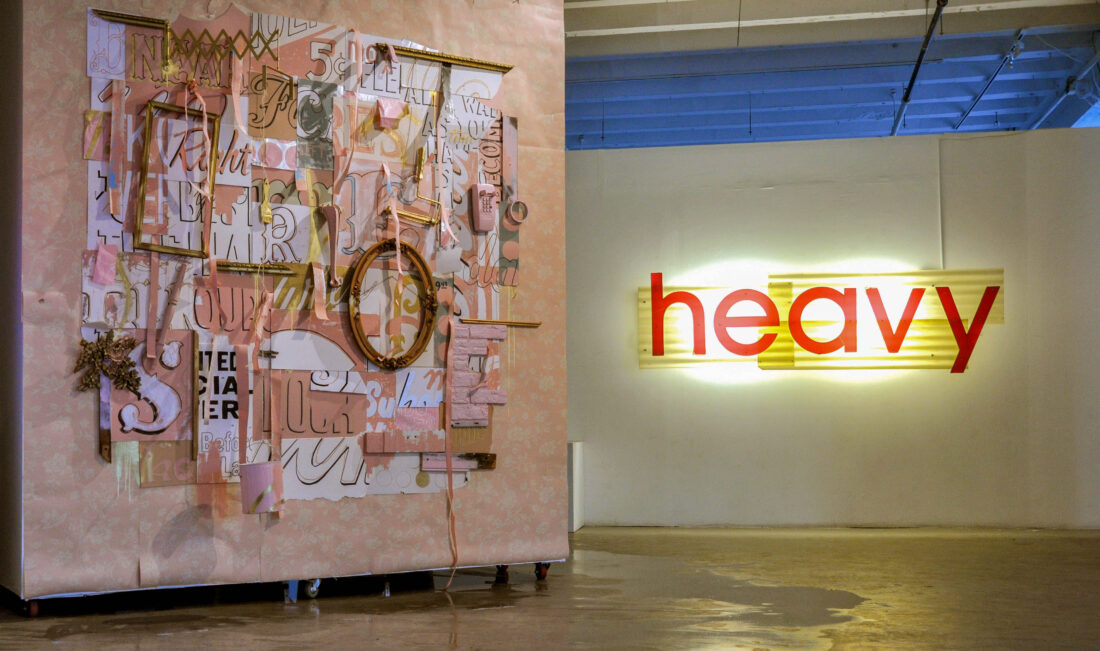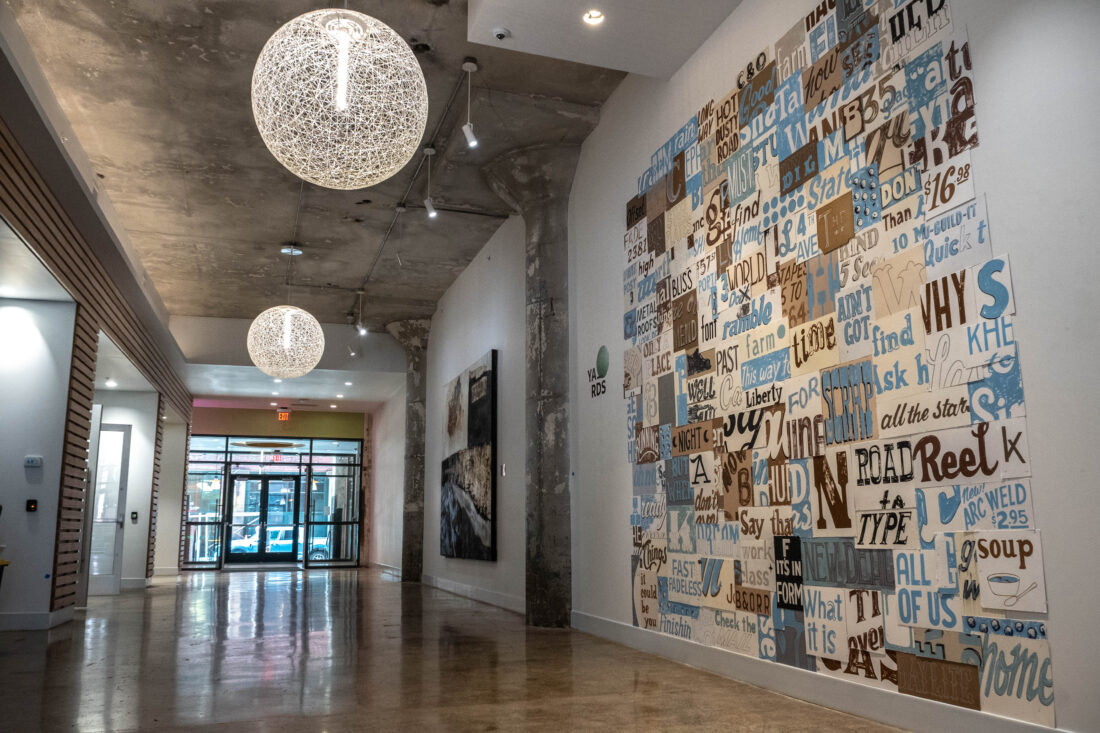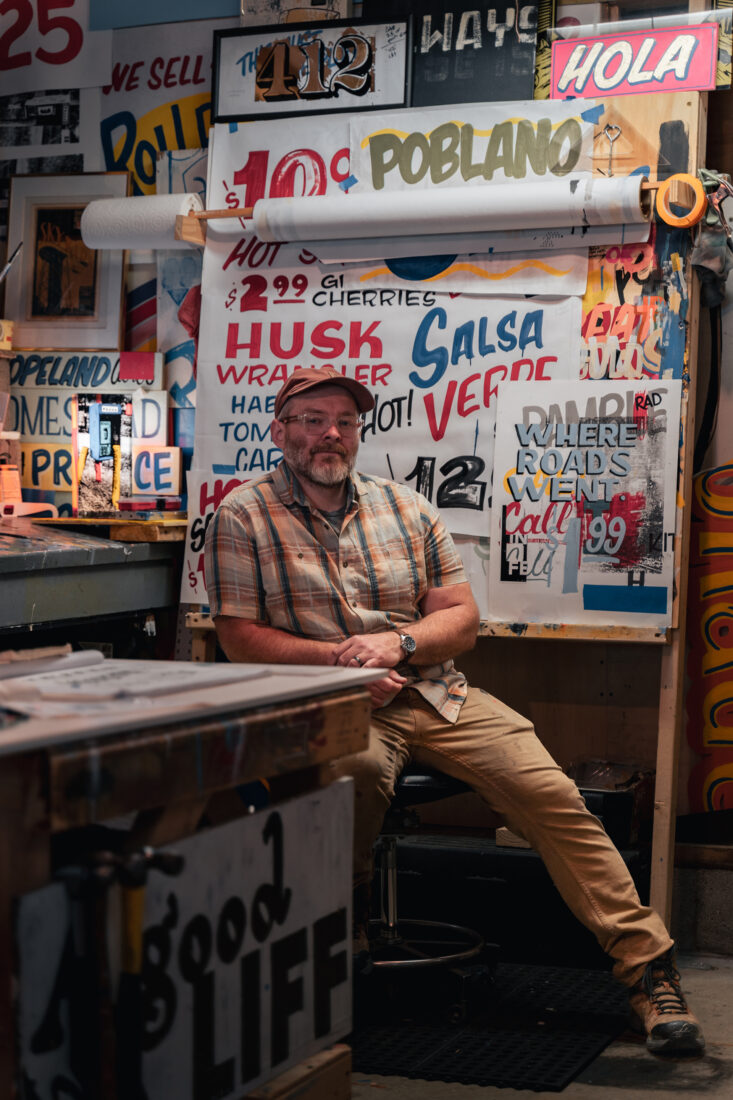
Ron Copeland is an inline skating legend that was raised in Canton, Ohio & made his impact within the skating industry with a highly technical trick vocabulary, a compact & refined style, and a penchant for massive stunts. Although injuries struck Ron just as he achieved professional status back in the early 2000’s, his impact on skaters & trick progression resonates to this day, whether some realize his influence or not.He was one of the first skaters I remember seeing who was landing HUGE rail transfers & hucking 540 disaster spins to grinds, which is something that is fairly common in competition these days, but Ron was one of the first to execute these moves alongside icons of our sport such as Chris Haffey & Brian Aragon.
Sadly, there isn’t enough footage & pictures documenting Ron’s ground-breaking skating during his heyday, although he was the main featured profile in the second edition of the cult classic video series Life Plus. That profile showed Ron handling tricks that are still timeless to this day. Not many skaters can say they have landed a full cab alley-oop p-star on the iconic Staples Center hand ledge, but Ron can proudly say he has that hammer in his list of blading accomplishments.
It has been many years since Ron has been in the blading lime-light, but he has stayed incredibly busy during that time, as he has made a living as a professional artist, having formed his own unique style that includes vibrant collage work, bold typography, and constructing large scale assemblage installations that mix popular culture advertising & mass-produced images into a truly breath-taking display. Our Editor-In-Chief Kevin Little had the opportunity to speak with Ron about his skating roots & how he got his start & found success in the highly competitive art world. Check out what Ron had to say.

KL: Hey Ron, thank you so much for taking the time out of your busy schedule to speak with us. Now, it has been quite a while since you have been in the “blading spotlight”, but for our new readers, can you give us a little background on how you got started in skating initially?
Ron: Hey Kevin, thanks for reaching out about doing this interview. Man, the early days were raw. There was very little access to magazines and videos where I lived, and no one aggressive skated around me at the time. I switched over from roller hockey to aggressive skating in 94 after seeing an ad in the back of a rec skate magazine with Chris Edwards grinding a rail. The concept of sliding down a rail didn’t seem possible to me at the time, but I dove in head first destroying plenty pairs of cheap skates jumping things, and trying to grind anything I could jump on. I began seeking out skate videos like Hoax 2 and Damaged Goods, I think. It was around then I discovered Daily Bread. My friends and I all bladed, biked and skateboarded but after seeing inline in the first X games in 95 I knew skating was going to be my life for the foreseeable future. Though I was mainly interested in skating street I skated a lot of contests over the years. My first one was a NISS in Florida while on a family vacation, followed by an Am Jam at the original Changa World in Cleveland, followed by many more ASA contests.
KL: You grew up in Canton Ohio, which isn’t a huge city by any means, how did you come up in the skating scene enough to become professional?
Ron: Yea man, Canton is small. For a few years I cycled through a bunch of local friends who had short term interest in skating. I’m pretty sure I grinded almost every rail within a 20 mile radius of my house back then. I met some of the dudes in the early Cleveland blade scene first from skating Changa. Craig Parsons and I toured around and battled in many ASA contests for a few years. Shortly after I met and was absorbed into the Akron “NORKA” skate scene. I met Justin Eisinger first, followed by James St. Ours, Andrew Cleary, Anderson Gillis, and Frank Kulow.
For the next couple of years we skated nearly daily in the late 90’s and early 2000s. I think ASA had desolved by that point but think it seemed I had a small impact in the circuit having qualified for regionals and nationals a few times. My momentum picked up while I was filming sections with Andrew and Frank. We pumped out sections for local videos, sent clips to Jan Welch, Life Plus, and got a spot on VG’s Battle my Crew 2, while traveling for IMYTAs, Monsters of Rolls, Bitter Cold, and a bunch of other small contests around the country. I think my persistence, willingness to sleep in vans and on floors, and my ability to continuously rank in the top 5 places in contests helped turn some heads my way.


KL: Your skating was VERY ahead of its time. You were doing 360 & 540 tricks into grinds, huge disasters, and massive rail transfers before they were widespread in the sports vocabulary. Who were you looking to for inspiration because you were up there with the best of them during that period?
Ron: Thanks for saying that! I looked up to the same skaters as most people, Brian Shima, Brian Aragon, Dustin Latimer, Rachard Johnson, and Franky Morales. For me though, most of the battle came from within. I may have been one of the most competitive skaters around for a few years, but it was all me against myself. I set my bar as high as possible and strived to pass it daily. Eventually, that mindset of wanting to always progress led me into more and more creative skating. Instead of how big of a kink rail could I grind, I pushed myself to do new or even odd switch up combinations or spins in and out of tricks. Some of that was probably brought on by DL and Damien Wilson pushing the boundaries of creativity on skates. At the same time, since I skated with one of the biggest hammer droppers Ohio has ever spawned in James St.Ours, it was just natural to skate stunt spots while also expanding what was possible creatively.
I have never been one to follow trends or care much for what others think is cool. I’m sure I saw someone else transfer rails before I started doing it but there wasn’t a ton of people doing it when I started, at least as far as I knew. I was doing it because I thought it was an evolution of the craft. There wasn’t a ton of spot light on me at first so I just did what I did and kept pushing. Eventually though it seemed it became a trend in skating and I had been doing it a while by the time people noticed more broadly. I find it far more interesting to stick with what you are into doing, honing your craft until one day the rest of the world figures out they are into your thing too.
KL: You were one of the top professionals that skated for K2 back in your heyday and were one of the rare individuals who could make the K2 Nemesis look cool Haha. How did your relationship with K2 come to be & how were you treated while you skated for them?
Ron: I actually skated flow for Razors for a number of years. I really dug their skates but the company never offered me any future, so I looked elsewhere. I got flowed some Roces, which I really wanted to like because their team was rad and led by Mike Opalek, another Ohio legend, but as it turned out I did not like the feel of the skates. I had talks with getting on Deshi for a hot minute also. Then one night I was skating warm ups with Ben Weis at the Motor City Melt Down in Detroit. Ben was amping me up to land a disaster 540 p-star on a launch to down ledge, which I laced after a few tries. That night I was talking with Ben about Deshi and Razors and he was like “No, you are skating for K2!”. He talked to Mike Powell that weekend, got me on flow and then on AM a few months later.
Though I was amateur that summer I spent a few months at Woodward as a visiting pro skating a bunch with Pat Lennon. Its actually kind of crazy how K2 worked out. Mike and I had been discussing an opportunity for me to move to China to lead a year long skate program there. At some point in the few months long discussion I pointed out how odd it seemed that they would want me as an AM to be that guy. I think I said something like “You haven’t done that much for me so far, why me for this?” Just days after we talked Mike’s response was to book me a flight out to Seattle to come see K2 and skate in Barn Burner that weekend. I was juiced to meet Eric Schrijn and to skate with Weis again. It felt like the biggest opportunity I had been given yet so I wasn’t going to waste it. I ended up getting 4th against Aragon, Haffy, Shima, and a whole list of other heavy hitters of the time. Before I left Seattle, Mike Powell told me I would be on the K2 pro team the following year. I fell in love with Seattle coming back to skate Barn Burner a couple more times over the years.

KL: You seemed to be at the height of your skating career, with numerous sponsors & traveling to support them & then you seemed to step out of the limelight quietly. What prompted you to take a step away from the blading industry?
Ron: Man, injuries did me in. I had a pretty traumatic head injury while I was AM with K2. It rocked my boat pretty hard for a bit. It was a little difficult to get back on my skates after that…it pretty much looks like I died in the clip, which is probably still out there somewhere. Then literally the day I signed my pro contract with K2 I tore my ACL, tore my meniscus, and fractured my femur. Mike Powell and K2 were so supportive of the situation. They honored my contract even though I was about to go into surgery just a few weeks later. I missed IMYTA Amsterdam because of that crap! When I had got back to being able to skate my knee was still pretty weak. I started developing an even odder more creative style of letting my right leg hang out of switch tricks and airs. I started doing this weird thing where I would push my right leg with my left from behind while pushing off (hard to describe haha). I kind of reprogrammed the way I skated. Doing even more switch because my right knee couldn’t take as much force as it did prior to the injury.
The last straw for me was bouncing my face off the ground at a K2 demo in Detroit. My knee gave out while airing off a mini-ramp into another transition. I knocked out my teeth and messed my face up pretty good. I had always thought no injury would ever stop me unless I couldn’t walk, but now that I was a working adult with poor health insurance coverage the costs to recover were becoming too much to continue. I still skated a few more years but a lot more quietly. K2 went under and most of my other sponsors were also gone. Eric Schrijn hooked me up with briefly with a flow situation with Eulogy. But for the most part I was just rocking out skating mini with friends at Vertigo in Youngstown. I actually kept skating mini fairly regularly when I arrived in Pittsburgh, totally out of the limelight then. It felt great though. No more going to battle in contests, no more hurling myself down steps or off ramps, I had shifted to smooth grinds and switch-ups on coping and transitions. It kind of felt like the fountain of youth the old-school skateboarders discover. Low impact longevity. I used to think and still do think if I had a nice mini nearby, I’d probably still be skating.

KL: Tell me about what you have been doing since then. You look to have made quite a name for yourself within the art community.
Over the years I found myself compelled to shoot photos again while recovering from injuries. I was driven to document the aging Rust Belt region. I became somewhat obsessed with documenting industrial and post-industrial sites, buildings, houses, signs, and places that seemed to be rapidly vanishing to the wrecking ball right before my very eyes. To me it wasn’t a glorification of ruin, more it was a celebration of the past. Like looking into a window that was about to be closed forever.
That hobby/obsession became an art while I was working at a sign shop where I ran the screen printing department. It all kind of spun off from there. I started screen printing stickers for street art campaigns and executed a number of gallery exhibits showing printed and painted works that included design and photography.
Things really took off for me when I moved to Pittsburgh. It took a few years to get my feet wet but I took the same approach as I did with skating, it was an around-the-clock effort to push myself into a new realm of self-expression. There was a span of time around 2010 -11 when I was creating new works for around 16 exhibitions in 13 months straight. In that span, I was involved in a bunch of group shows, a few solo exhibits, and some restaurant design displays. In the stretch I showed in Canton, Akron, Cleveland, Youngstown, Pittsburgh, Chicago, and Detroit. I had a close to a full-time job then so I was working around the clock. Once I got off work I would burn screens while making dinner, print while eating, design before bed, and start over the next day.
After that gnarly stretch, the impact was apparently enough to make an impression on a few galleries in my orbit. I got gallery representation from BE Gallery in Pittsburgh and was also represented by the Maxwell Collett Gallery, then Galerie F in Chicago. The pace slowed but I still kept grinding. Often times being at the right spot at the right time to help out a restaurant that need interior design content quickly for an opening, or being the guy that could create an exhibition on short notice for a gallery that had a gap in their scheduling. There were lots of sleepless nights and passing on hanging out with friends for those years. Don’t get me wrong I had a blast and got to live it up but I was majorly devoted to honing in my craft and continuing to grind.
KL: You use lots of reclaimed & recycled materials to build your art pieces. How do you come across all the materials you use to create these large works?
Ron: So early on I literally picked up pieces of broken signs off the ground while shooting photos in abandoned industrial sites. I made some wall assemblages and the first lamps from the bits of gathered materials. I realized I really liked that aesthetic but had super limited access to that kind of stuff, so after a while I began making more and more of the signs myself. I had been painting letters for years so I eventually learned traditional sign painting also. After the ball really got rolling I developed relationships with a few sign shops near my studio in Pittsburgh. They would donate truck loads of decommissioned or broken signs for me to chop up and reassemble for lamps. I had also forged relationships with a number of galleries and museums to get their excess plexiglass leftovers. I would use those blank materials to create signs and screen print on to mimic the aged and patined reclaimed signage. I still scour action sites, thrift stores and antique stores for materials, but a lot less than I used to. When I first started working in this aesthetic there were few people interested in signs so I could get what I needed on the cheap or for free. I’ve got a pretty good stock pile of materials in my shop so I only collect new materials now when they are free or affordable.

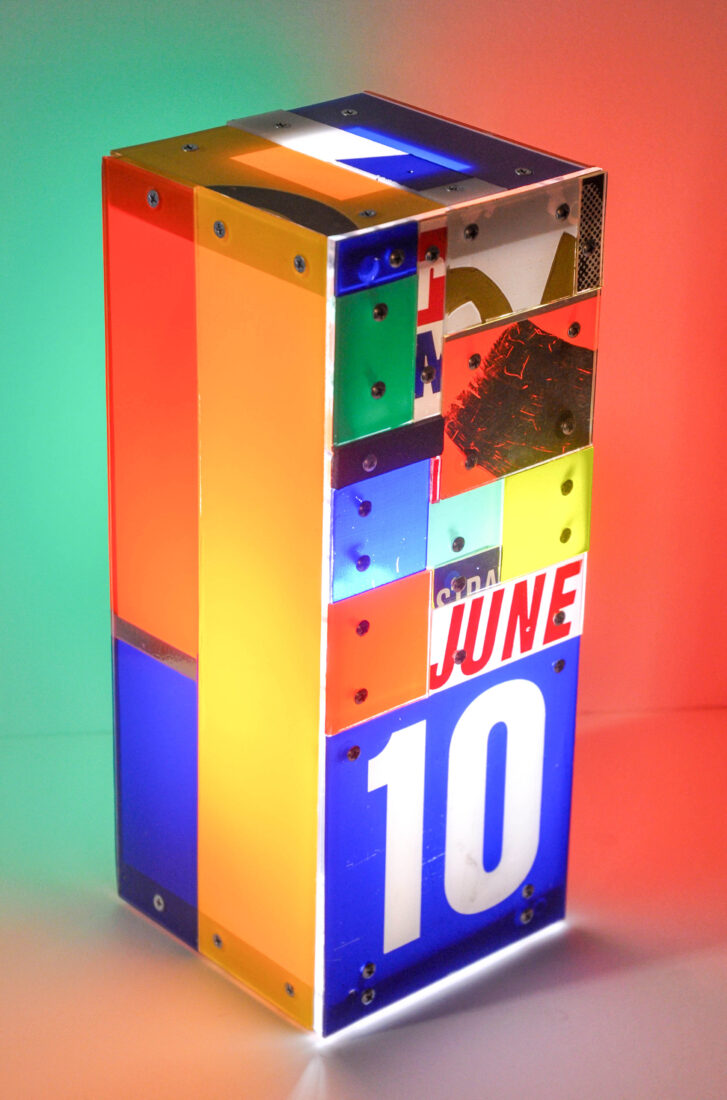
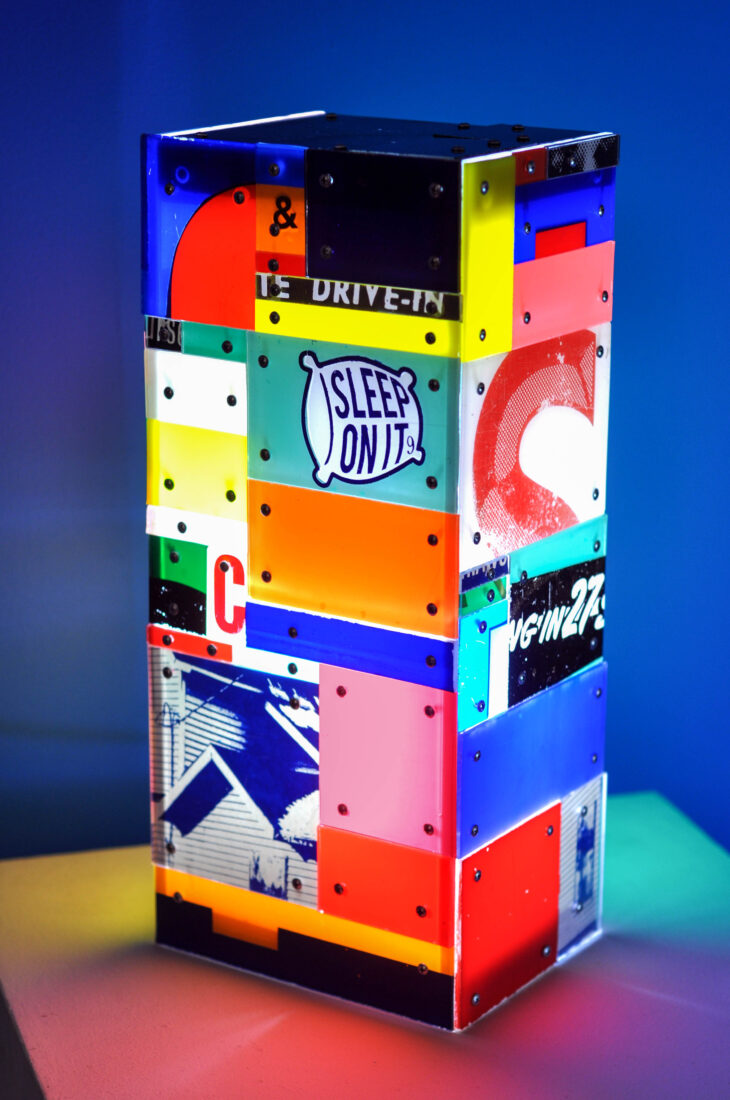
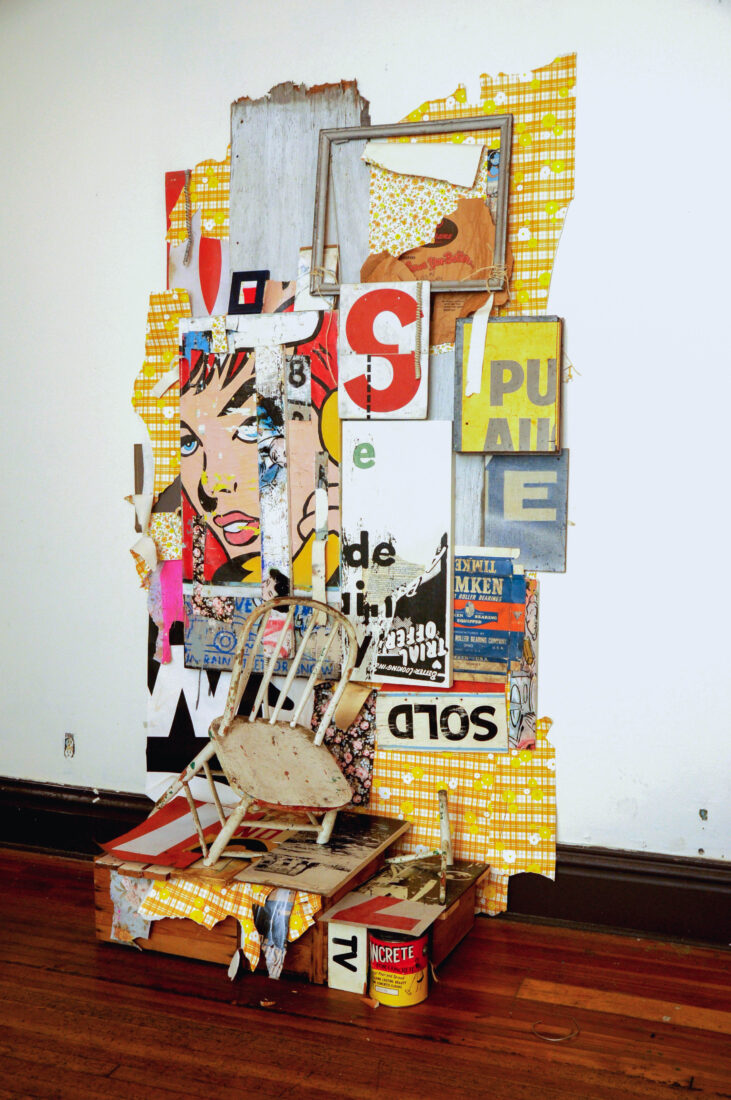
KL: One of my favorite pieces you do are your large & elaborate installation pieces that look to take a ton of planning & preparation. Tell me how your artistic evolution took you to this place.
Ron: Yes they do take a lot of work to design / build in the studio and then to take down and build again in a gallery, museum, or clients space. I guess it’s kind of similar to with my skating, I always want to go bigger. Early on I felt like I was pulling scenes from those abandoned spaces I photographed, almost like I was transplanting them or at least the vibe of them into the gallery setting. I love the idea of creating a larger-than-life, somewhat overwhelming, ephemeral experience that transcends the gallery space taking viewers to another place and time all together. I think of those installations as kind of a memory visualized and re-contextualized but not quite accurately. Most of the details are there but jumbled together, overlapping, and running into one another. I like the idea of working big because of the freedom it allows for. I can say all kinds of things quietly that add to the larger whole work. I personally feel like my installations are the pinnacle of my artistic vision. I like to blur the line between artifacts, objects, and art combining them all into one larger experience that requires time to take it all in. I want the viewers of my installation work to find a new detail they like about it every time they look at it.
There is a bit of a visual split in my exhibition installations with the mixed medial manipulated artifacts and then my client work that is a little cleaner more typography and sign driven. I have worked with clients to create those more commercially driven sign installations designed about a specific theme for the client’s vision. Those can be fun and rewarding also. One client I did a lot of work with would provide a spreadsheet of keywords gathered from their employees for me to turn into signs. They would ask them would be something like “What does Chicago mean to you?” So I would take a list of restaurant names, historical figures, actors, museum titles, foods, beers, you name it, and either research actual signage or advertisements to paint, or if there was nothing to pull inspiration from I would organically come up with graphic content from scratch to paint. The final product for those clients is a massive collaborative visual experience the employees can take credit for helping to inspire.
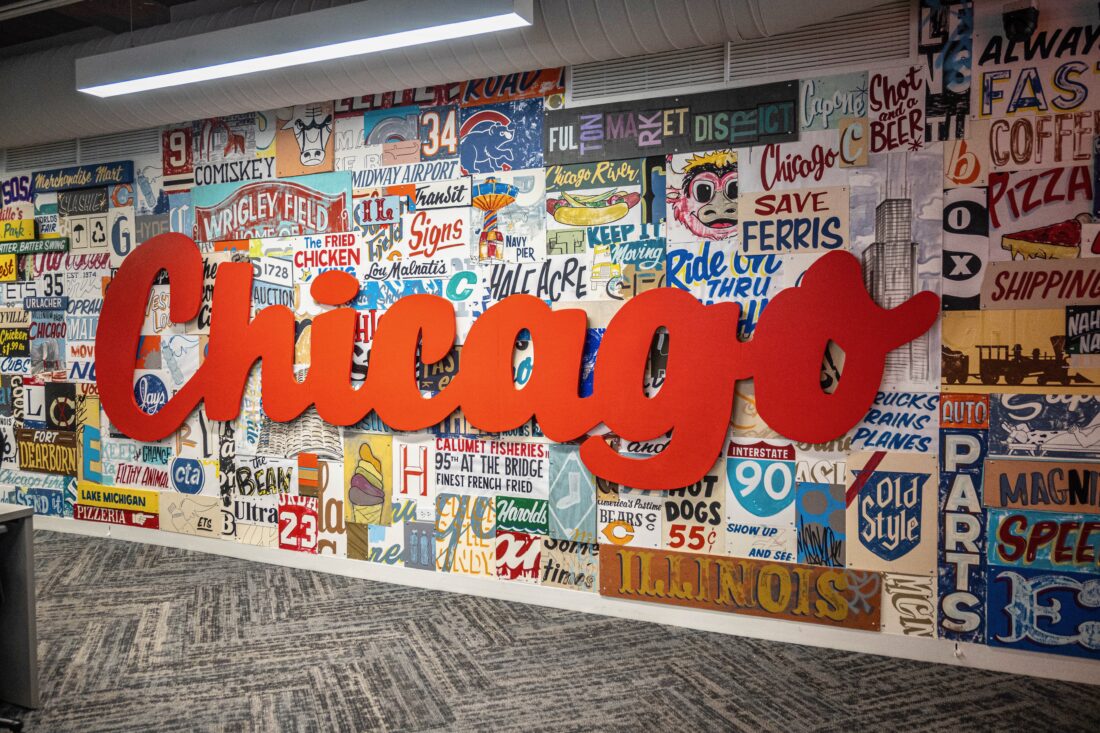
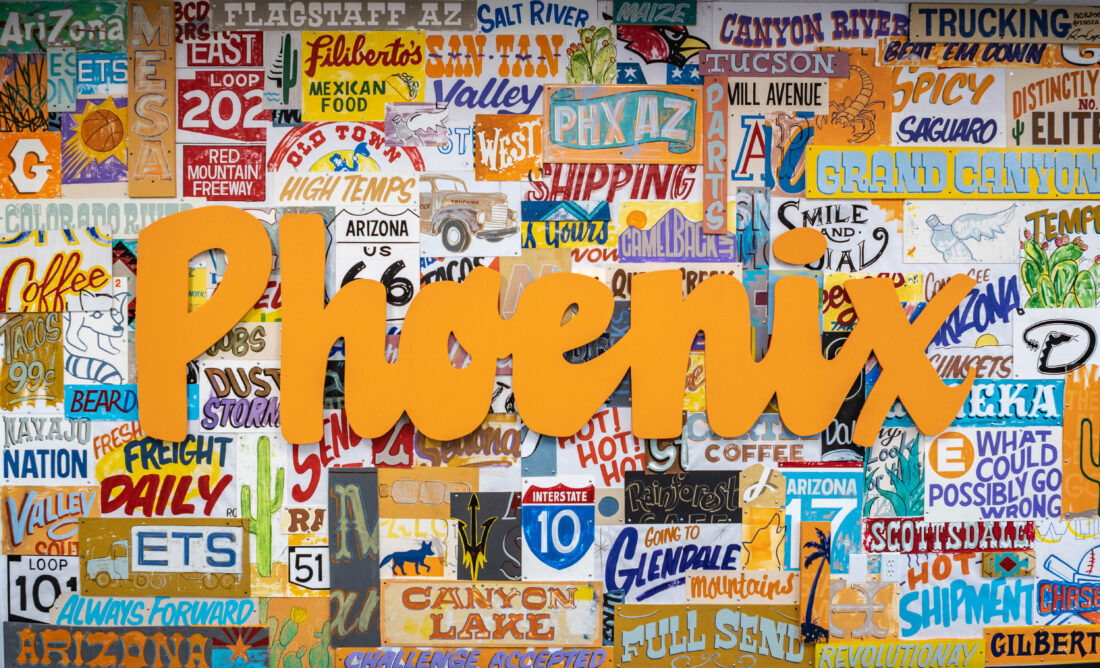

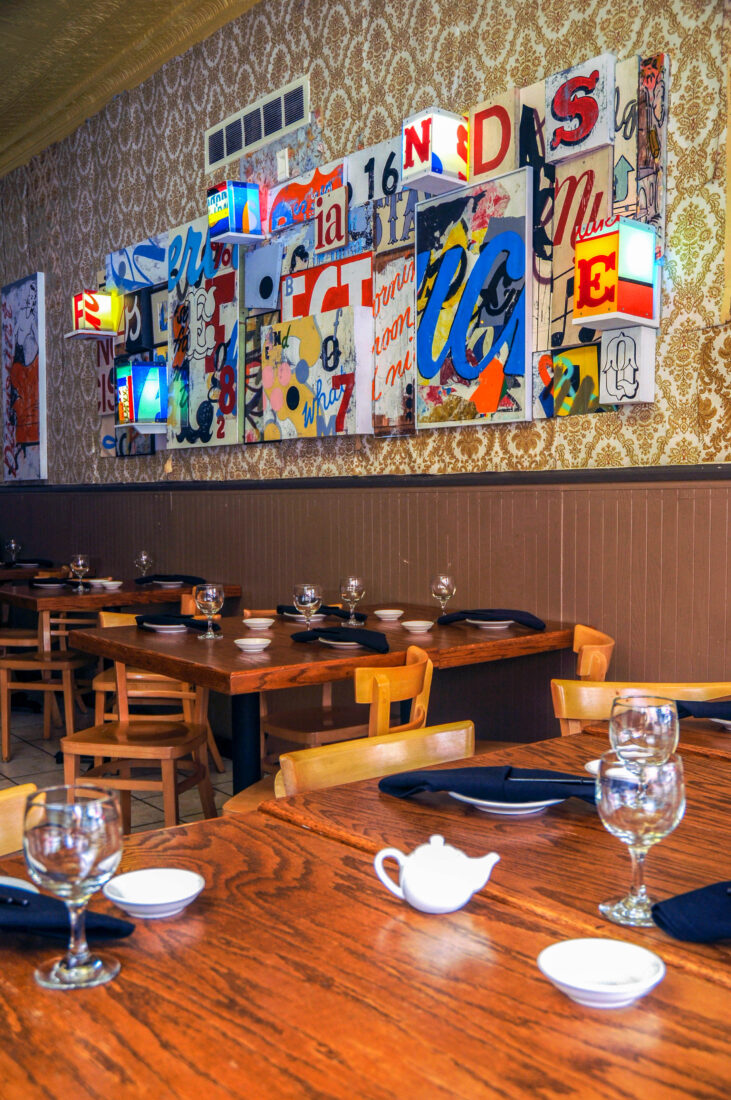
KL: Have you ever felt like your art has gotten to a point where it just gets bigger & more intricate until you can’t seem to scale back to anything smaller?
Ron: Yes and no, haha. I definitely get most excited about the creation of large-scale works. I like the physicality of working large and the freedom of expression large scale allows for. For about 10 years a handful of clients kept me busy making assemblage murals that resembled my exhibition installations. Their projects were for offices and restaurants around the region and around the country. Those projects ran their course and now I am back to focusing on exhibitions, small works, and new client projects. I am still making a few dozen reclaimed sign desk lamps a year and creating small wall works for individual sales. In recent years I have been taking on more commissions for commercial sign painting gigs for clients too. There seems to be an ebb and flow of creating works for clients, creating works for exhibition, and just hammering out small pieces to get something out of my mind and into the real world, then best case scenario into the hands of a collector.
KL: Tell me about the recent solo show you did titled “PURE BLISS”. What was your initial concept for the show & can you go into detail about the creative process behind the pieces you made?
Ron: Yeah, That is my most recent exhibition and my largest and most elaborate in a number of years. Efforts going into this project weren’t just the creation of works by screen printing, sign painting, sculpture, lighting, gold leaf gilding, and installation, but also a lot of research about the actual town of Blissfield, my family history, and the history of the Pennsylvania Railroad. Many of my commissioned projects have a portion of historical research involved but for this exhibit, I put a ton of effort into researching this theme I am passionate about. The full title is “The Story of the Blissfield General Store and the Pure Bliss Advertising Campaign”. The backstory of the exhibit is my great grandfather W.W Moore ran a general store in the early to mid 1900s in a small Ohio railroad boomtown called Blissfield. The town sprung up when a rail line was laid through the area to extract coal and sand for the steel industry. Simultaneously the railroad companies were promoting westward travel into what then was referred to as the uncharted west, so travelers would end up stopping in Blissfield to get provisions for their trip or to settle in the area to farm. In the late 1940s, the coal and sand in the area had all been used up and America was less interested in traveling by rail and more interested in getting behind the wheel of an automobile.
The exhibit has three defined sections. The first is the Railroad station installation and signage inspired by historical photos and railroad advertisements. Next is the general store installation and signage. Though it was a real place and the structure still stands, there are no existing photos of the Blissfield general store when it was open. I gleaned inspiration from other general stores I photographed around the country as well as other information gathered online and a few details my mom recalls from her childhood. The third section of the exhibit is the Pure Bliss ad campaign which is fully made up by me for this exhibit. In the imagined scenario my great-grandfather saw the writing on the wall that America was ready to abandon travel by rail for getting behind the wheel of an automobile. I imagine he with the help of his local sign painter created a campaign to sell Pure Bliss to those excited to be behind the wheel. It was a blast to create signs and advertisements for this imaginary family business that celebrated the love and freedom of the open road. The thematic span of time I worked with in the exhibit was broad, from the 1890s through the 1950s. So I was able to really let loose on different aesthetics, typefaces, and themes. I used an 1891 type specimen book that was recently gifted to me for some of the earliest advertising inspiration. The timing of receiving that book couldn’t have been better. Other inspiration was drawn for years of my own photography of gas stations, general stores, and roadside signage.
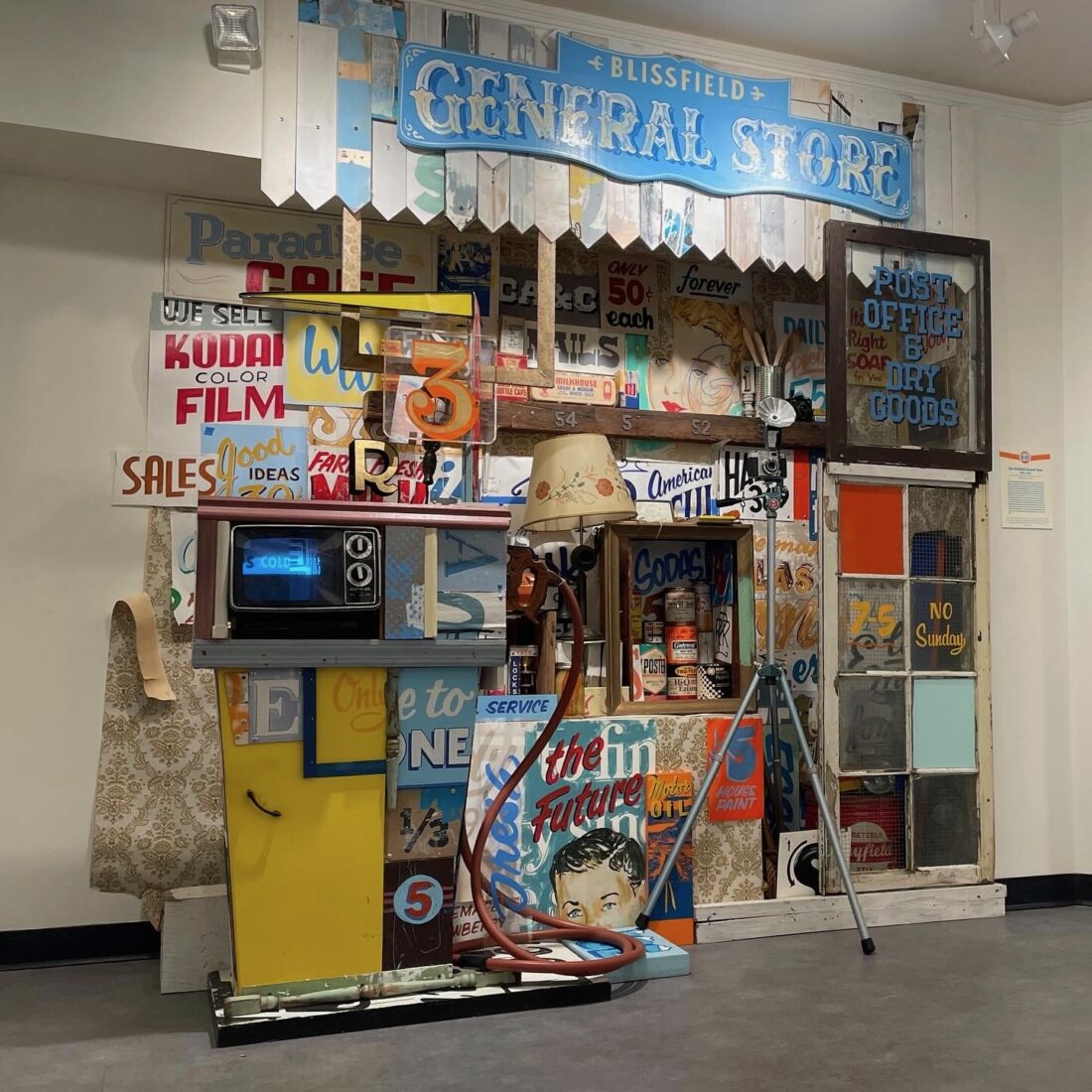
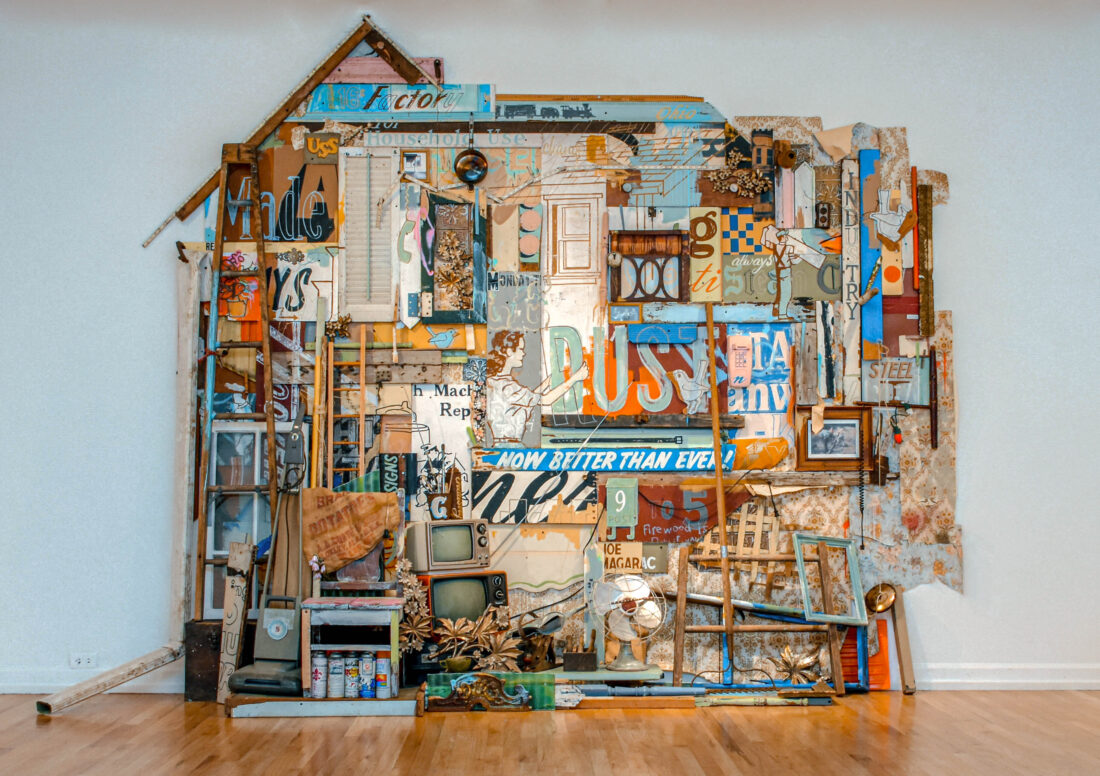
KL: On top of being an incredible artist, you are quite the accomplished photographer. You recently released a photo book titled 66 on 35, which documents your 5-day travels along Route 66 from Eureka Missouri to Flagstaff Arizona in January of 2023. Tell me more about that trip through small-town America that was the basis for your photo book.
Ron: Oh man, since the first time I had heard of Route 66 I had wanted to drive it and shoot photos along the way. Back then I only shot film so now about 25 years later to self-publish a book of all film images shot on 66 is like a lifelong dream realized. In 2022 I was wrapping up an assemblage mural for a client whose office is in Phoenix AZ. A few months before planning to drive out I realized I could take an extra couple of weeks to loop the country. On the way out with a truckload of artwork, sign painting kit, and camping gear I drove 66 shooting from sun up to sun down day after day. Following mainly the original route of the road, I passed through many small bypassed towns with remnants of sun-stained and sandblasted roadside Americana. I didn’t really research where I was headed I just followed the map.
It took me down hundreds of miles of dirt roads, through BLM desert land, native reservation lands, into the mountains, and through so many forgotten small towns with aging tourist attractions, abandoned motels, and vacant gas stations. Most of those places were not far from the new faster-moving highway, but there often was not an exit for miles in either direction so the economy is fully cut off. As a child of the post-industrial Rust Belt, I am drawn to these worlds that seem to be holding on long past their expected obsolescence. To me, again, it’s not like a glorification of decay to devote myself to these places, it is more like getting the last chance to speak with our elders to learn the way things use to be for better or worse. I self-published 66 on 35 through Blurb, or my Etsy shop. I’ll be coming out with my next series of gas station books soon, so keep your eyes peeled for those to drop.


KL: I am a huge Keith Haring fan & saw that you were commissioned to do an installation in his signature style. Can you go into detail about how that came to be & how you were able to capture his style so well?
Ron: The “black and white room” was a Keith Haring Pop Shop installation the Akron Art Museum hired me to help create in 2023. Part of the “Against All Odds: Keith Haring Exhibit” in the museum. After studying Haring’s work a bit more in depth, reviewing videos of his technique, and reading about his philosophy, I re-designed his aesthetic for about a month, then took a little over a month to paint it. At first, I treated his line work like a sign painting gig, with slow deliberate brush strokes, but then eventually I realized it was originally painted by Haring as more of a graffiti hand style. I started by projecting my sketches and following my line work pretty tightly early on. Once I loosened up on the application of the paint I got into the vibe and was able to pretty much mimic his aesthetic just by glancing at source materials and following the rules I had come up with to mimic Haring’s passionate line-making.
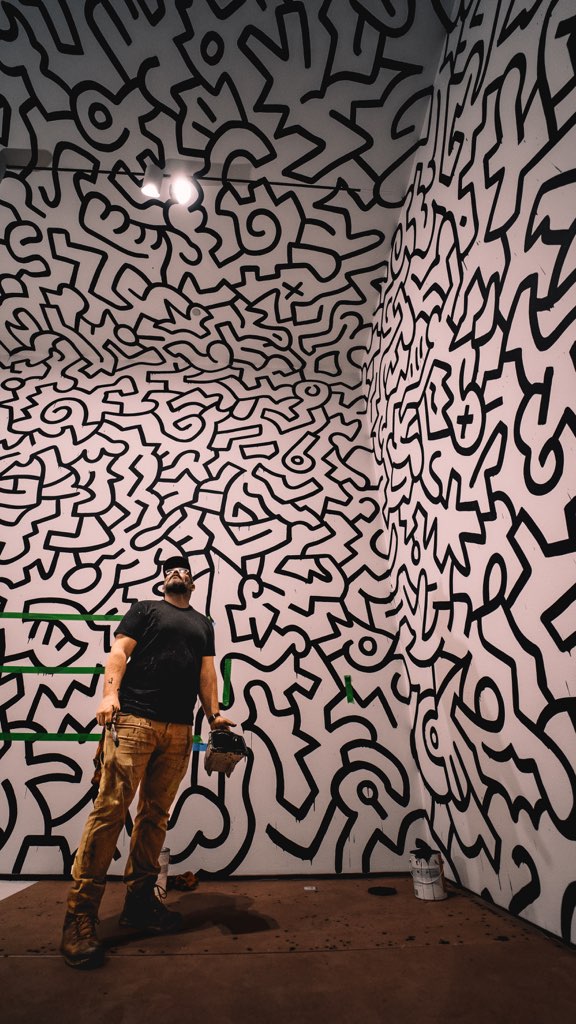



KL: Thank you so much for taking the time to answer our questions, Ron. Keep up all your amazing work. Is there anyone you would like to thank for their help & assistance over the years?
Ron: Thank you Kevin for the opportunity to speak with the blading community about my past and present. I’m not physically involved with rollerblading like I once was but I am in spirit and you can bet I still watch clips daily. The list of people to thank is longer than this whole interview haha. First I would like to thank my wife, Amy, for her support of my artistic visions and for being cool with my up and leaving town for whatever opportunities arise. I’d like to thank my parents for their support from the earliest days of skating to today. They allowed me the freedom to continue skating through all those injuries and all the costs of traveling when I was young. Without those years of skating, I would not be who I am today. Thank you to Mike Powell of K2, for taking me along on the ride with Erik, Ben, and Pat. Those trips and memories will forever be some of the funnest times of my life. Thank you Ben Weis, RIP my friend, for getting me on K2 in the first place. Thank you to Joy Borelli Edwards (gallery owner) and Billy Craven (curator) for both helping me and believing in me as an artist. Lastly, I would like to thank all the dudes who skated in Ohio especially the NORKA crew Andrew Cleary, Frank Kulow, James St.Ours, Anderson Gillis, Mike Gagliardi, Jimmy Spetz, and Steve Ehret. You guys are my homies for life.
